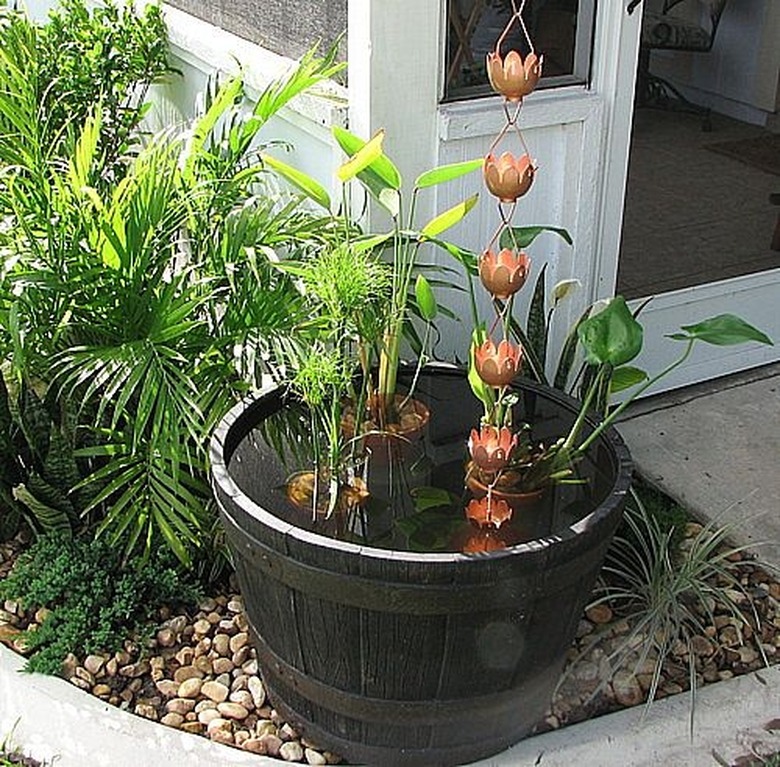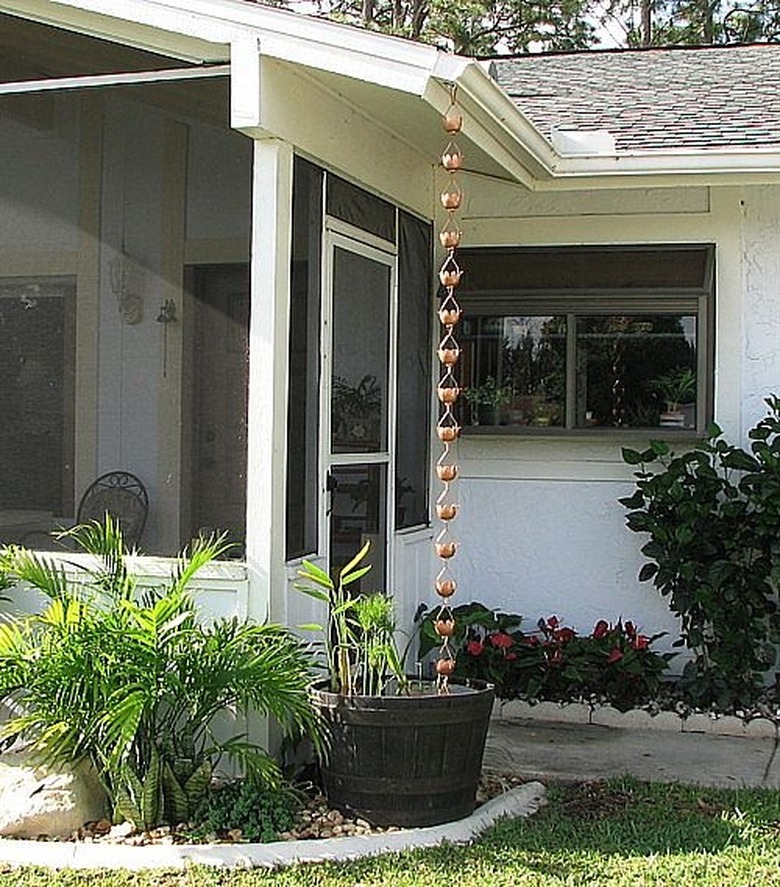How To Make A Rain Chain Water Feature
Things Needed
- Rain chain, about 7-feet-long
- Half wine barrel with no holes
- Water plants
- Mosquito ring (to prevent breeding in the water)
- Large clay pots
How to Make a Rain Chain Water Feature. A water feature is an excellent focal point for any type of garden. One that incorporates the Japanese-inspired rain chain, which is considered a "kinetic sculpture," is both attractive and functional. A rain chain water feature is a short and easy project that provides a beautiful and aesthetic impact to your garden. Here's how.
Step 1
Decide where to build your rain chain water feature. Rain chains originated in Japan where they hang chains from the roof to direct rainwater into jugs used to store their water supply. The rain chain would, therefore, replace a downspout and allow the water to flow in the open. The water feature would ideally be under an overhang that's not too near the wall of the house.
Step 2
Install the rain chain by removing an existing downspout or creating a hole through the gutter system. The rain chain usually comes with an attachment (a V-shaped piece of thick wire) that allows you to hang it from the hole of the gutter.
Step 3
Position the half wine barrel under the rain chain and fill it with water. The barrel will catch the water from the rain chain and disperse it into the garden as it overflows.
Step 4
Add water plants in the barrel as desired. Prop the water plants by inverting clay pots inside the barrel. Weigh the plants down with rocks or pebbles.
Step 5
Add the mosquito ring, the purpose of which is to eliminate larvae in the water before they mature into adult mosquitoes.
Step 6
If desired, anchor the rain chain by tying the end of the chain to a rock inside the barrel.
Step 7
Wait for rain and marvel at the column of water flowing through the rain chain and the quaint jingling sound it makes.
Tip
Purchase a rain chain from a landscaping or gutter supply store. Rain chains can also be acquired online. Different designs are available. Half wine barrels made of fiberglass (or resin) are available at home improvement and garden stores. Real half barrels are available from wineries and specialty stores. Water plants (or pond plants) are available at garden stores. You can leave them in the pots they were sold in or repot them into bigger, heavier clay pots. Examples of water plants are Lotus, Water Lily, Papyrus, Pickerel Weed and Powdery Thalia.

